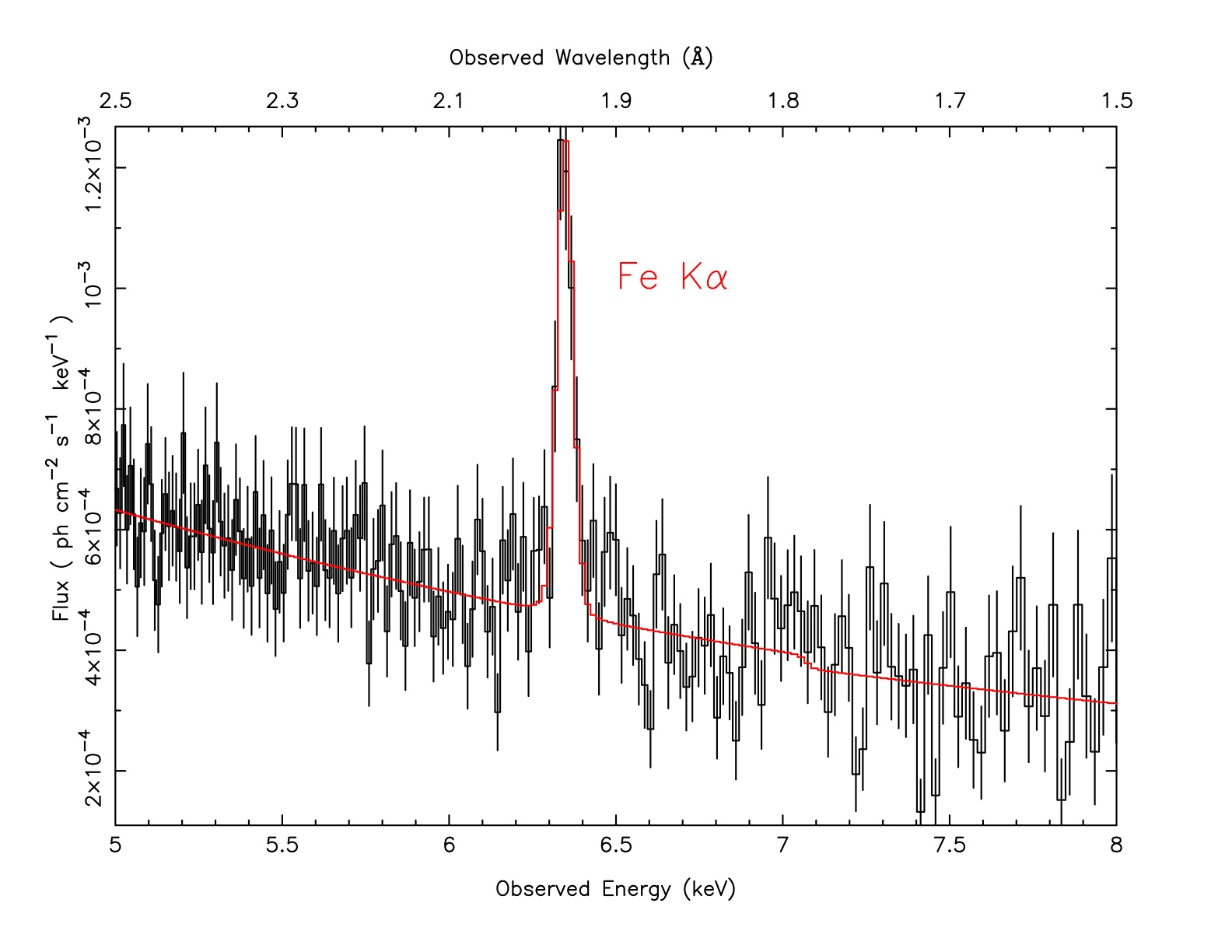NGC 2110 has historically been classified as a narrow emission-line galaxy, which is the subclass of Seyfert galaxies with strong 2-10 keV X-ray emission and narrow (< 600 km/s) optical emission lines. Observations with the VLA (e.g., Ulvestad & Wilson 1989) show it is the parent galaxy of an S-shaped jet-counterjet system that extends 4" in the N-S direction. Optical emission-line studies (e.g. Mulchaey et al. 1994; Ferruit et al. 2004) reveal a similar-shaped distribution of [O III] which, interestingly, is not spatially coincident with the radio emission. ROSAT observations (Weaver et al. 1995) first hinted at the presence of extended circumnuclear X-ray emission in NGC 2110, the spatial and spectral details of which we can now investigate in detail by taking advantage of the superb angular and spectral resolution of Chandra.


Figure 21 shows a smoothed tri-band Chandra ACIS-S image of NGC 2110 combined over 3 different observing modes (ACIS-S in VF mode, ACIS-S + HETGS in alternating frame mode, ACIS-S+HETGS in TE mode) in 3 AOs. The extended emission is dominated by soft X-ray photons, in contrast to the nuclear emission, where a significant fraction of the hard (> ~3 keV) X-rays are concentrated. This is consistent with our preliminary findings from the combined ~210 ks HETGS spectrum , which shows a strong Fe Kα emission line that may have origins in both the torus and accretion disk (Figure 20).

A multi-wavelength overlay of the emitting regions (Figure 22) shows the X-ray emission to be
offset from the radio (5-GHz VLA), but coincident with the HST
[O III]. While it is known that the radio is associated with a
small-scale jet, we speculate that X-ray and [O III] may have
common origins in the form of reprocessed nuclear radiation,
or more exotically,
in gas shock-heated by the radio
jet.